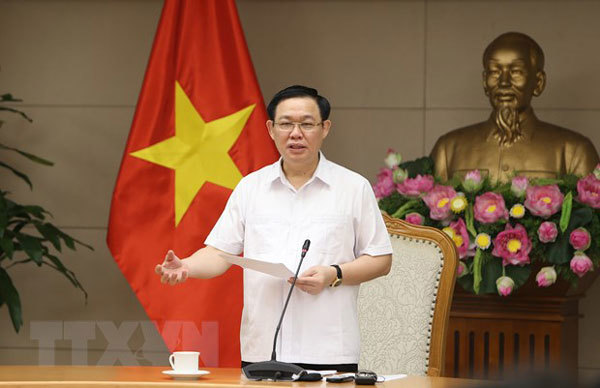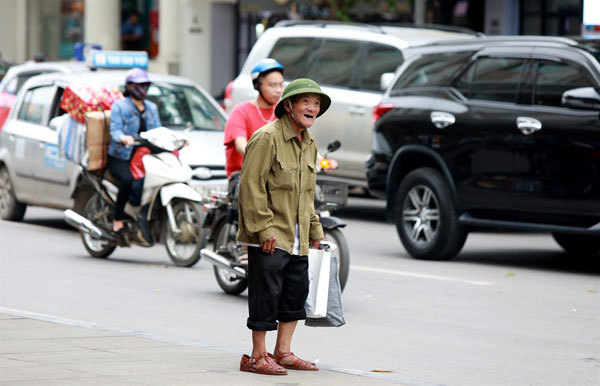According to a report by the Ministry of Labour, Invalids and Social Affairs (MoLISA), the richest 20 per cent of the population made 9.7 times more than the poorest 20 per cent in 2014. In 2018, the income difference was 10 times.
More bridges built across the country
Six million Vietnamese rise above poverty line in five years
 |
| Deputy Prime Minister Vuong Dinh Hue speaks at a meeting in Hanoi on Thursday to review the national target programme. — VNA/VNS Photo Duong Giang |
The income gap also resulted in a big gap in access to basic services, markets and employment between the rich and the poor, especially in the northern mountainous area and the Central Highlands region.
Chairing a meeting in Hanoi on Thursday to review the national target programme, Deputy Prime Minister Vuong Dinh Hue said that although the country had made some progress in reducing poverty, the changes were not sustainable.
Eighteen out of every 100 poor households had escaped poverty but fallen back under the poverty line.
The report by MoLISA also said that while poverty was reducing in some areas, in others the poverty rate was still higher than 50 per cent.
Thanh Hoa, Nghe An, Binh Dinh, Quang Nam and Quang Ngai provinces had the highest poverty rates in the country. Among poor households in these provinces, the rate was always highest among ethnic minority households.
MoLISA Deputy Minister Le Quan attributed the problem partly to many households’ location in areas with harsh natural conditions, which hinders their ability to rise out of poverty through sustainable livelihoods.
Deputy Prime Minister Hue said it was worrying.
“We need a solution to this situation,” he said.
 |
| A beggar on Hang Bai Street, Hoan Kiem District, Hanoi. — VNS Photo Truong Vi |
Rural area building
The National Target Programme on New-style Rural Area Building has been completed 18 months ahead of schedule, Deputy Minister of Planning and Investment Vo Thanh Thong said at the meeting.
Under the national target programme for the 2016-20 period, 50 per cent of all communes must reach new rural area standards by 2020. By late June of this year, 50.1 per cent of communes had met the target.
The programme, initiated by the Government in 2010, sets 19 criteria in socio-economic development, politics and defence with the aim of boosting rural regions of Vietnam.
The list of criteria includes the development of infrastructure, improving of production capacity, environmental protection and the promotion of cultural values.
Deputy Minister Thong said 5,458 communes met the standards, up 620 communes (equivalent to 6.96 per cent) by late 2018. Under the report, 80 out of 644 districts in 36 provinces and cities were recognised as new rural districts.
The programme has been deployed nationwide, serving to raise living standards for rural people.
However, some areas have progressed more quickly than others. The Red River region has made the quickest transition with 82 per cent of communes meeting the standards. It was followed by the southeast region (70 per cent), the south-central coastal region (45.82 per cent), the Mekong Delta region (42.77 per cent), the Central Highlands region (37.73 per cent) and the northern mountainous region (26.45 per cent).
However, the disbursement rate of the central budget was slow. As of late June, 2019, the disbursement rate was around 35 per cent with the rate for new development capital accounting for just 24 per cent of the target.
Deputy Minister of Agriculture and Rural Development Tran Thanh Nam blamed the slow disbursement on cumbersome capital allocation procedures and the lack of capacity from local programme staff.
In 2019, the State budget funds allocated for the national target programme for sustainable poverty reduction is VND10 trillion.
Deputy PM Hue said the slow disbursement of funds for both national programmes was hindering the country's progress in social welfare.
He asked relevant ministries to quickly work out solutions.
VNS
 The gap between the rich and the poor in Vietnam has been widening.
The gap between the rich and the poor in Vietnam has been widening.